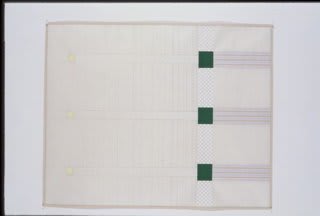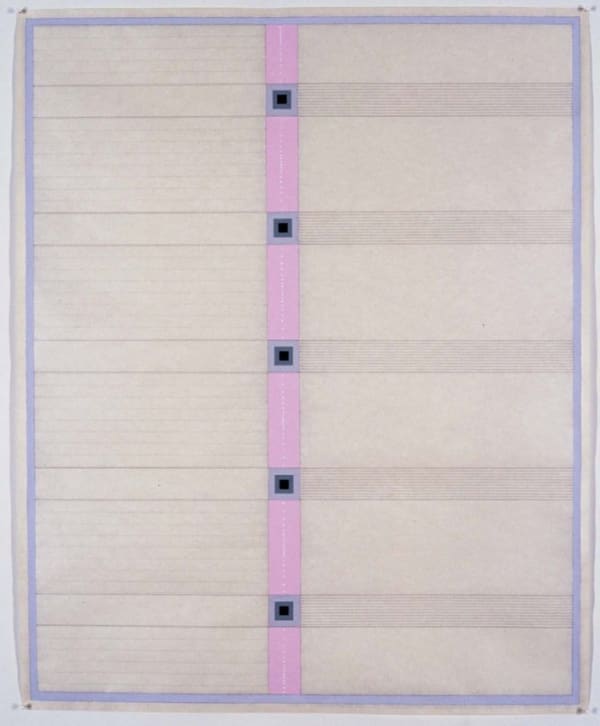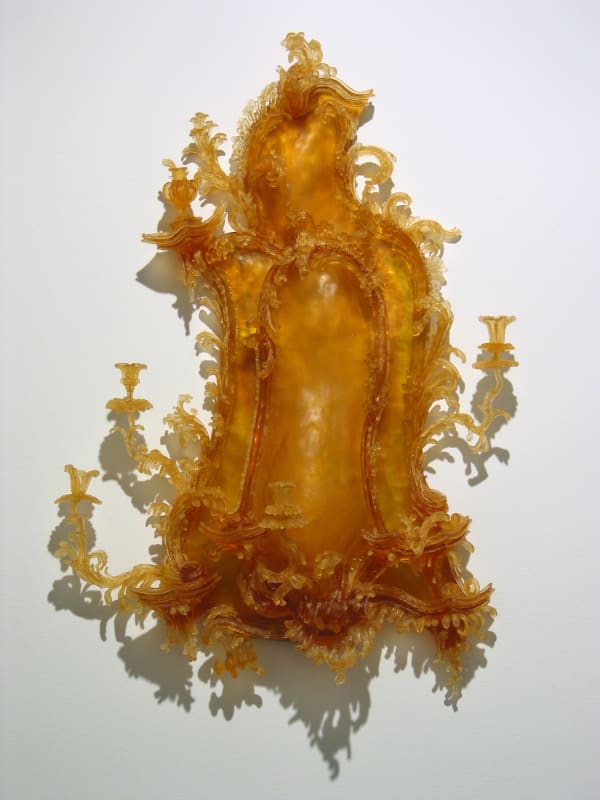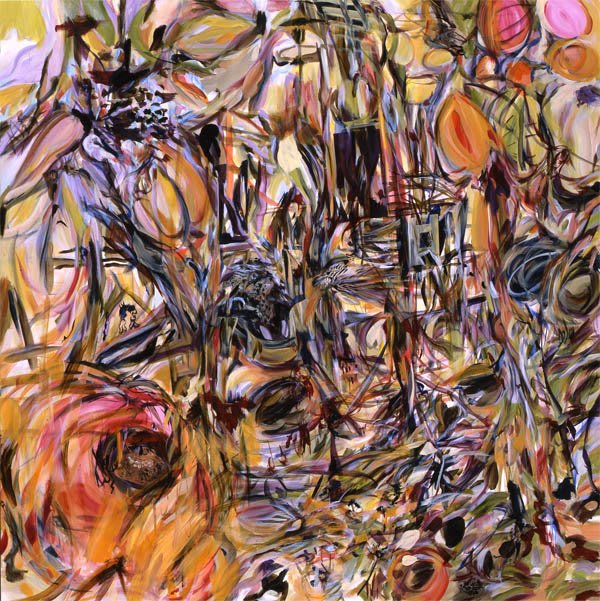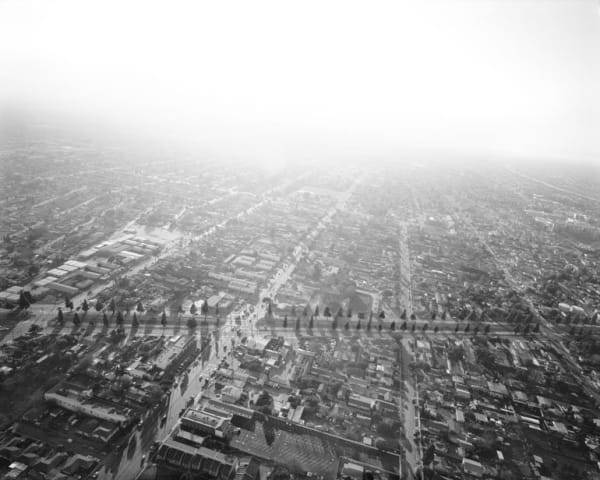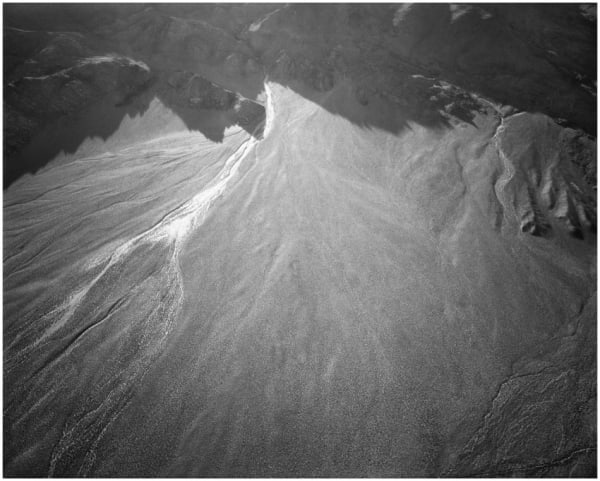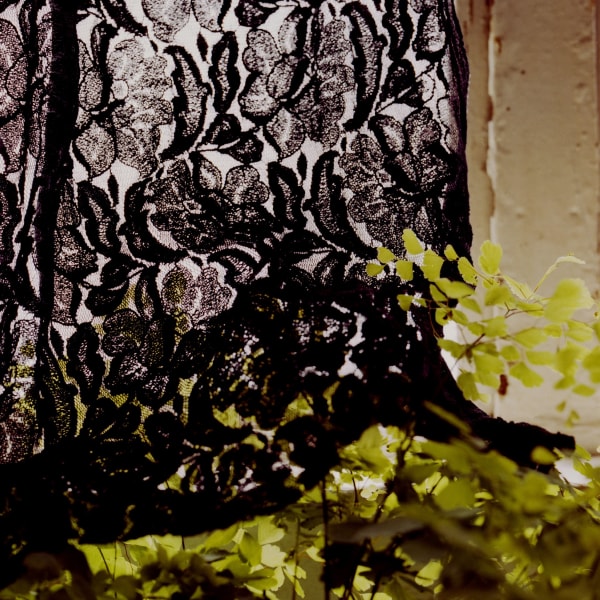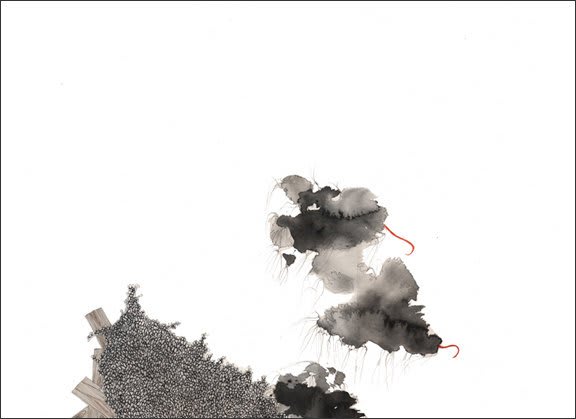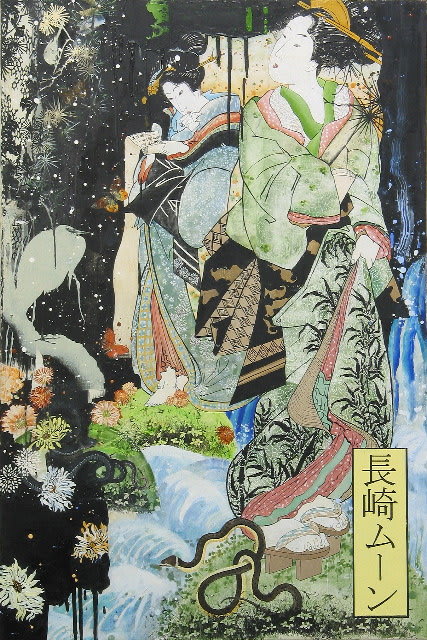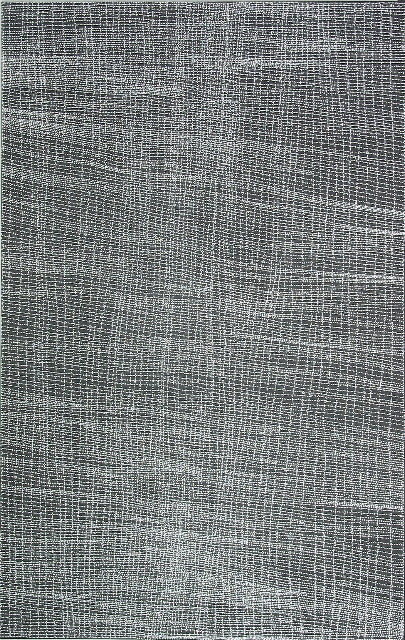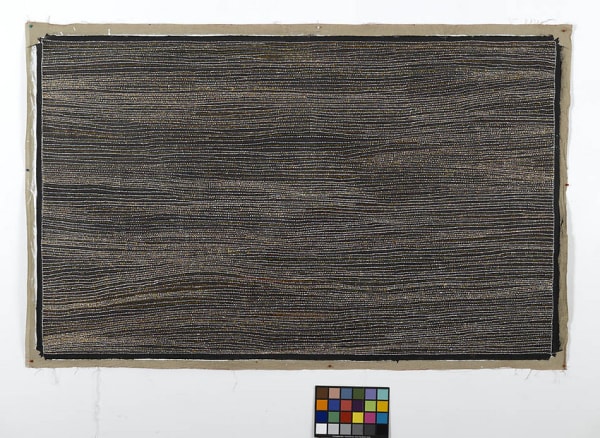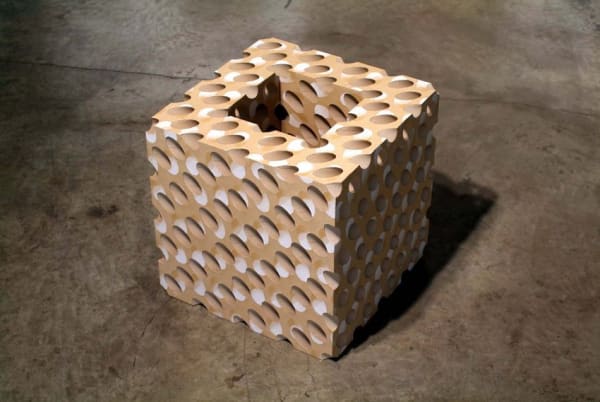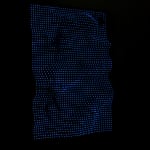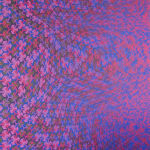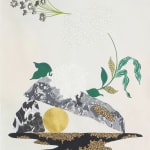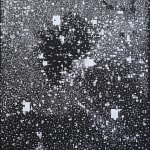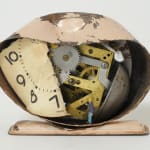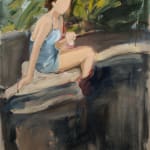New York Gallery
Hosfelt Gallery is pleased to present the inaugural exhibition in its new Hell’s Kitchen, Manhattan, venue.
The exhibition spaces are designed around concepts of spatial flow and proliferation of daylight. A sixty-foot-long exhibition space links two forty by forty-foot galleries. Art will be lit by diffused skylight, yet all of the galleries are designed with the possibility of darkening them completely to accommodate artworks utilizing technologies. Design is by award-winning San Francisco designer Louis Schump in association with the Manhattan architecture firm FXFowle. A permanent piece by digital artist Jim Campbell will be installed on the exterior of the building later this year.
The exhibition previews the work of artists who will have future projects in the gallery:
John Andrews creates color fields of extraordinary depth and complexity. His practice involves repeated applications of wax and within each layer, a grid of pigmented pinpricks. Randomness emerges from the structure in these minimal yet dynamic paintings.
Richard Barnes’ photographs present a continuing investigation into the preservation and display of objects. Recent work documenting natural history museums explores the way humans collect, classify, contextualize and display artifacts in an institutional setting — and what that presentation says about cultural values.
Dutch artist Nelleke Beltjens makes serene, minimal sculptures. In this series of works in steel, Beltjens creates a dialogue between forms in pairs. Despite their medium, the works possess unexpected lightness and refinement.
Jim Campbell’s background as filmmaker and MIT-trained engineer and mathematician informs his ground-breaking installation and sculptural work dealing with information theory and human comprehension that has set the standard for new media art. Three large-scale light boxes present accumulated high-resolution images of multidimensional scenes that visually and conceptually express the passage of time and energy of the crowd. Also exhibited is a new LED work exploring the amount of information the human mind requires to discern meaning.
Susan Marie Dopp balances the application of boldly painted spaces on fields of fine-spun mulberry paper. The results are crisp compositions of patterned events. Some works develop according to established or self-generated systems, such as geometric spirals fanning out in a Fibonacci sequence or ruled lines germinating from “seeds” set in a gridded plane. Others beautifully exploit the tension created when her paper buckles as pigment dries on its surface, making the work both objectively and subjectively transcend the two-dimensional.
Based in Los Angeles, Anoka Faruqee makes paintings that play with perception of color, gesture, and reproduction. Faruqee exhibits a series of diptychs, in which there is an “original” and a “duplicate.” “Originals” are completed by a simple act such as pours of paint or strokes from a large brush. The “duplicate” results from a complex process of blending colors and plotting points to create a faithful, human-made, pixilated reproduction of the initial gesture. The work raises questions about painting and originality at a time of overwhelming technology.
Nicole Phungrasamee Fein’s watercolor paintings begin with four pencil points marking a rectangle within which she lays down free-hand strokes of color. The first brushstroke is made with water tinted with a single pigment. For the second brushstroke, pigment is added to the previously tinted water. The color of each successive brushstroke represents the addition of another color to the water. Vibrant stripes of apparently unrelated color are conceived through the additive process.
Andrea Higgins makes paintings that are magnifications of fabric swatches. Moire, herringbone, houndstooth, plaid — each fiber is represented by layered brushstrokes. Repetition of marks, like weaving of threads, creates patterns that are both minimal and dynamic. While the paintings appear to be elegant abstractions, they are in fact portraits. The textiles represent the “look” of a particular historical figure as well as the character of the person portrayed by representing their “taste” and the social position they occupy or aspire to.
Australian Timothy Horn’s sculpture is about ornament, desire and fetish. Chandelier-scaled “jewels” of nickel-plated bronze and lead crystal — based on 18th Century French designs — are enticingly vulgar. They hint at intimacy, social status, the meaning of public display of wealth. Likewise, interpretations of Thomas Chippendale’s designs in fleshy, amber-colored rubber, unexpectedly and gaudily seduce.
The “cuteness” of the hand-made, quasi-industrial figures that populate Chinese-Canadian Joyce Hsu’s work is strategic. Utilizing a visual vocabulary akin to Asian cartoon and toy industries, she creates a universe that, while charming at first, explores human vulnerability, desire for companionship and emotional dependence on consumerism.
Naomie Kremer’s large-scale paintings are neither abstract nor representational, yet contain aspects of both genres. Broad, physical gestures recall abstract expressionism and action painting, but Kremer moves her work beyond those references with her ability to convey memory. Apparent improvisation evolves into multi-layered representations of figures and space.
Photographer and bookmaker Michael Light explores landscape, ecology and the concept of the sublime. “Some Dry Space” is an ongoing series of large-scale, black and white, aerial images of the desert southwest, including Los Angeles. 100 SUNS documents the American nuclear test program and explores its cultural implications.
Within the universe of Crystal Liu’s photographs and drawings exists a visual vocabulary built of domestic objects and nature transformed. Scale shifts, simple things take on enormous import and viewers find themselves open to new realities. Everything is extraordinary and anything is possible.
Uruguayan Marco Maggi’s needle-thin line drawings web across surfaces of aluminum foil and white paper. Inscriptions/encryptions in his lexicon of “pre-Columbian and post-Clintonian” abstraction suggest incomprehensible alphabets, genome mapping and satellite surveillance. Inscrutable works made with simple media defy notions of technological advancement. Maggi’s art is a meditation on communication for an impatient culture.
The work of Australian Dorothy Napangardi conveys her sense of place with points of paint. Every point is a marker and each marks a path. The work transcends its formal elegance to communicate ideas of travel, tradition, cultural trade and spirituality. Within the paintings, dots of paint create a visual corollary to a cultural landscape. Outside the picture plane, where these paintings meet notions of “the contemporary,” there exists a rich variety of references and interpretations.
Gay Outlaw’s work in photography and sculpture explores form through structure, pattern and translation. Her process often begins with a form from one of her photographs. She distills the shape or pattern and re-works it in a variety of materials — rubber, cardboard, vinyl, wood, glass. Each re-thinking leads to another. Every shift in scale, material or dimension is made with such sensitivity and care that no matter how extreme or unexpected, it seems logical, even inevitable.
Argentinian Liliana Porter draws from her extensive collection of souvenirs, toys, functional knickknacks and figurines in the creation of photographs and video. Porter presents these characters, de-contextualized against single-color grounds, in various scenarios that, with masterful simplicity, distill life to the elemental and expose political and cultural dichotomies.
Californian Greg Rose makes paintings that lie between anime and minimalism, traditional Chinese landscape painting and abstraction, the aesthetic and the tacky. Organic forms, architectural structure and references to cinematography commingle in color combinations pleasingly shocking. Referencing Eastern art forms of garden design and ikebana, Rose explores the desire to reconnect with nature through control and manipulation.
London-based Gideon Rubin’s paintings focus on portraiture. By painting an image on top of itself many times, the subjects are reduced to simple forms. Characteristics are recognizable, but defining qualities are missing. Figures are solid but smoothed-out, as if eroded by time.
-

-

-

-

-

-

-

-

-

-

-

-
 Anoka FaruqeePour Painting and Copy, 2002flashe vinyl paint on linen on panel33 3/4 x 30 3/4 inches/85.7 x 78.1 cm
Anoka FaruqeePour Painting and Copy, 2002flashe vinyl paint on linen on panel33 3/4 x 30 3/4 inches/85.7 x 78.1 cm -
 Andrea HigginsSwatch (Continental), 2005oil on canvas24 1/2 x 21 1/4 inches/62.2 x 54 cm
Andrea HigginsSwatch (Continental), 2005oil on canvas24 1/2 x 21 1/4 inches/62.2 x 54 cm -
 Timothy HornSpunk (boy germs), 2002lead crystal, nickel-plated bronze, Easter egg foil, mirrored blown glass54.25 x 19.75 x 7.75 inches
Timothy HornSpunk (boy germs), 2002lead crystal, nickel-plated bronze, Easter egg foil, mirrored blown glass54.25 x 19.75 x 7.75 inches
137.795 x 50.165 x 19.685 cms -
 Timothy HornMutton Dressed as Lamb, 2005transparent rubber40 x 30 x 9 inches
Timothy HornMutton Dressed as Lamb, 2005transparent rubber40 x 30 x 9 inches
101.6 x 76.2 x 22.86 cms -
 Timothy HornSilk Purse (Sow's Ear), 2005transparent rubber47 x 34 x 6 inches
Timothy HornSilk Purse (Sow's Ear), 2005transparent rubber47 x 34 x 6 inches
119.38 x 86.36 x 15.24 cms -
 Timothy HornSilk Purse (Sow's Ear), 2005transparent rubber47 x 34 x 6 inches
Timothy HornSilk Purse (Sow's Ear), 2005transparent rubber47 x 34 x 6 inches
119.38 x 86.36 x 15.24 cms -

-

-

-
 Michael LightLos Angeles 02.12.04 #9 Looking Northwest, Somewhere near Torrance, 2004archival pigment print mounted on aluminum40 x 50 inches
Michael LightLos Angeles 02.12.04 #9 Looking Northwest, Somewhere near Torrance, 2004archival pigment print mounted on aluminum40 x 50 inches
101.6 x 127 cms -
 Michael LightLos Angeles 02.12.04 #12 Highways 5, 10, 60 and 101 Looking West, LA River and Downtown Beyond, 2004archival pigment print mounted on aluminum40 x 50 inches/101.6 x 127 cm
Michael LightLos Angeles 02.12.04 #12 Highways 5, 10, 60 and 101 Looking West, LA River and Downtown Beyond, 2004archival pigment print mounted on aluminum40 x 50 inches/101.6 x 127 cm -

-

-
 Michael LightSome Dry Space: Cadiz Lake, at 600', 0700 hours, Twentynine Palms, CA, October 2000, 2000pigment inkjet print mounted on aluminum40 x 50 inches
Michael LightSome Dry Space: Cadiz Lake, at 600', 0700 hours, Twentynine Palms, CA, October 2000, 2000pigment inkjet print mounted on aluminum40 x 50 inches
101.6 x 127 cms -

-

-

-
 Crystal Liu"In the dead of winter 'When Night Falls'", 2005chromogenic print29 x 29 inches
Crystal Liu"In the dead of winter 'When Night Falls'", 2005chromogenic print29 x 29 inches
73.66 x 73.66 cms -
 Crystal Liu"My House is Dead, 'my house is dead", 2006watercolor, marker & ink on paper13.75 x 13.75 inches
Crystal Liu"My House is Dead, 'my house is dead", 2006watercolor, marker & ink on paper13.75 x 13.75 inches
34.9 x 34.9 cms -
 Crystal Liu"My House is Dead, 'Nest'", 2006watercolor, marker & ink on paper19 x 13.75 inches
Crystal Liu"My House is Dead, 'Nest'", 2006watercolor, marker & ink on paper19 x 13.75 inches
48.3 x 34.9 cms -
 Crystal Liu, 2006watercolor, marker & ink on paper19 x 13 inches
Crystal Liu, 2006watercolor, marker & ink on paper19 x 13 inches
48.3 x 33 cms -
 Crystal Liu"My House is Dead, 'Throwing Stones'", 2006watercolor, ink on paper13.75 x 19 inches
Crystal Liu"My House is Dead, 'Throwing Stones'", 2006watercolor, ink on paper13.75 x 19 inches
34.9 x 48.3 cms -
 Crystal Liu"My House is Dead, 'Vultures'", 2006watercolor, marker & ink on paper13.75 x 13.75 inches
Crystal Liu"My House is Dead, 'Vultures'", 2006watercolor, marker & ink on paper13.75 x 13.75 inches
34.9 x 34.9 cms -
 Crystal Liu"My House is Dead...it's my birthday" (cake drawings) "Strawberry Short Cake", 2005ink and marker on paper7.875 x 10.125 inches
Crystal Liu"My House is Dead...it's my birthday" (cake drawings) "Strawberry Short Cake", 2005ink and marker on paper7.875 x 10.125 inches
20.0025 x 25.7175 cms -
 Marco MaggiLandmark, 2014pencil on clayboard16 x 48 inches/40.6 x 121.9 cm
Marco MaggiLandmark, 2014pencil on clayboard16 x 48 inches/40.6 x 121.9 cm -
 CATHERINE MCCARTHYGreener Yet, 2005oil and acrylic on canvas53 x 35 inches
CATHERINE MCCARTHYGreener Yet, 2005oil and acrylic on canvas53 x 35 inches
134.62 x 88.9 cms -

-

-

-

-

-

-








